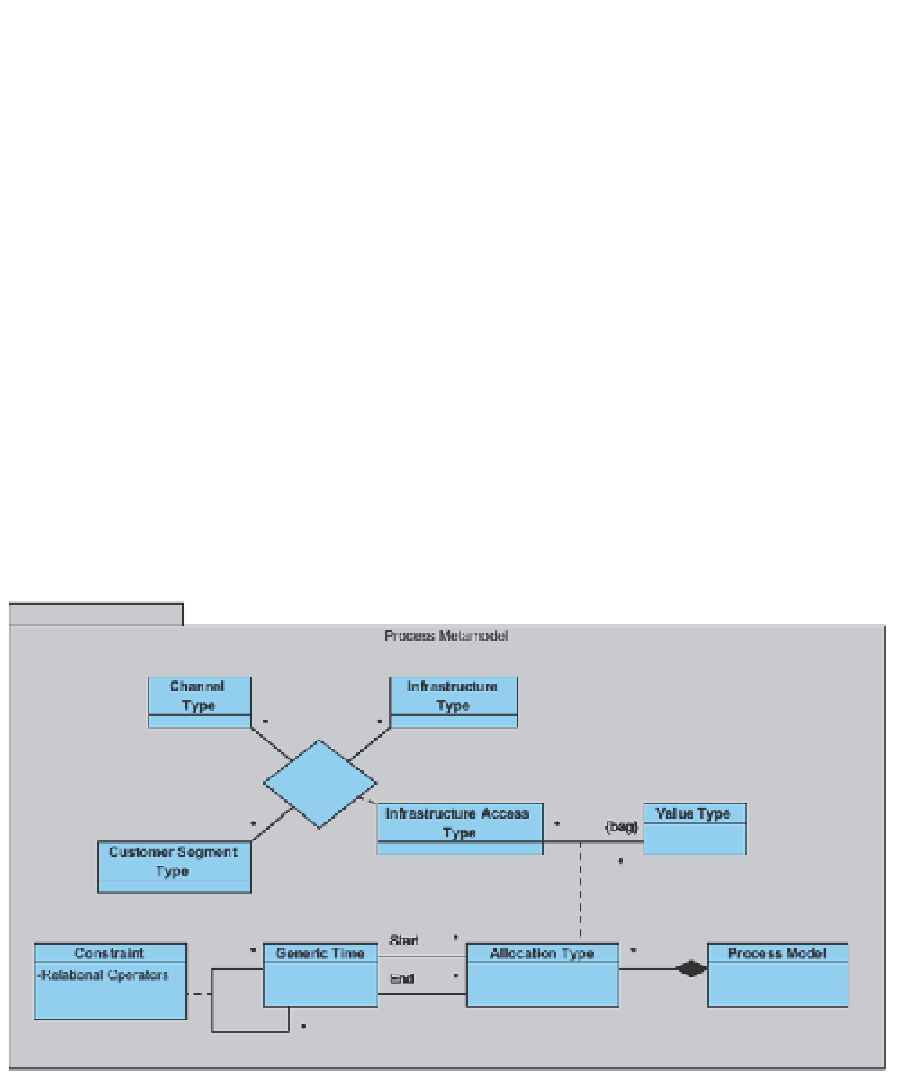Information Technology Reference
In-Depth Information
uses. The proposed metamodel, as the model of the process models, aims to support the
whole spectrum of problem definitions intended to be addressed.
As shown in the class diagram, Infrastructure
Access Types
are defined first, as follows: each
Customer Segment Type
accesses through a
Channel Type
a certain
Infrastructure Type
. In the
most general case, all
Customer Segment Types
would be able to access all
Infrastructure Types
through all
Channel Types
; the existence of restrictions in the access to some
Customer
Segment Types
, or access to certain infrastructures through some
Channel Types
, will lead to a
whole set of problems to be addressed.
This problem base is reflected in the instances of the entity
Infrastructure Access Type
. In turn,
each of these instances might be assigned different
Value Types
. In commercial infrastructure
allocation problems, these
Value Types
will be the tariff types, e.g. reduced tariff, normal
tariff, premium tariff; offer price, list price; high season, low season... The assignment of a
Value Type
to an
Infrastructure Access Type
defines a generic
Allocation Type
. Each
Allocation
Type
will apply during a time interval, which will be defined by a
Generic Start Time
and a
Generic End Time
. These times are handled in the generic model layer in abstract form,
without taking a specific value or time. Even if they do not take a specific value, in complex
models logical relationships (
Constraints
) will have to be defined among them.
According to this approach, a
Business Process Model
is defined as a set of
Allocation Types
.
The relationship that starts with the solid rhomboid is a Composition Relationship.
Therefore, in this layer, the proposed metamodel encompasses in a generic manner
definitions of infrastructure allocation optimization problems.
Fig. 2. UML class diagram of the Process Metamodel, the model of the process models
Model families can be derived from the instance patterns. Specifically, families can be
defined if a dependency is found between two of the following entities:
Channel Type
,
Customer Segment Type
and
Infrastructure Type
; and according to which of these entities
affects the definition of the prices or values,
Value Type
. As an example, there might be cases
in which customers can access through various channels a given infrastructure (e.g.

Search WWH ::

Custom Search